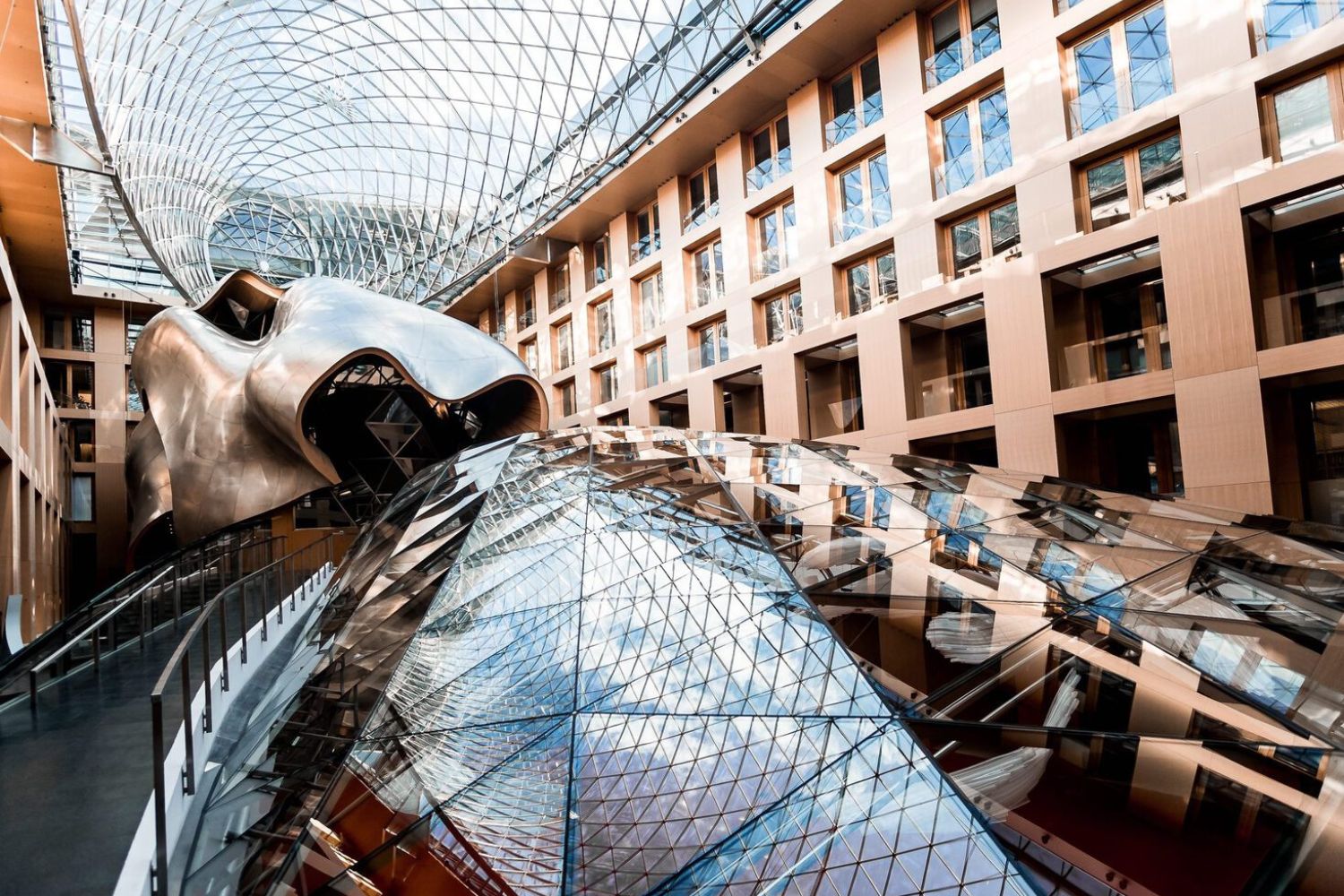- Home
- Articles
- Architectural Portfolio
- Architectral Presentation
- Inspirational Stories
- Architecture News
- Visualization
- BIM Industry
- Facade Design
- Parametric Design
- Career
- Landscape Architecture
- Construction
- Artificial Intelligence
- Sketching
- Design Softwares
- Diagrams
- Writing
- Architectural Tips
- Sustainability
- Courses
- Concept
- Technology
- History & Heritage
- Future of Architecture
- Guides & How-To
- Art & Culture
- Projects
- Interior Design
- Competitions
- Jobs
- Store
- Tools
- More
- Home
- Articles
- Architectural Portfolio
- Architectral Presentation
- Inspirational Stories
- Architecture News
- Visualization
- BIM Industry
- Facade Design
- Parametric Design
- Career
- Landscape Architecture
- Construction
- Artificial Intelligence
- Sketching
- Design Softwares
- Diagrams
- Writing
- Architectural Tips
- Sustainability
- Courses
- Concept
- Technology
- History & Heritage
- Future of Architecture
- Guides & How-To
- Art & Culture
- Projects
- Interior Design
- Competitions
- Jobs
- Store
- Tools
- More
8 Remarkable Mosques Around the World You Need to Visit
Discover 8 remarkable mosques around the world that showcase breathtaking architecture, rich history, and cultural diversity. From the iconic Blue Mosque in Istanbul to the stunning Sheikh Zayed Grand Mosque in Abu Dhabi, explore how these spiritual landmarks blend art, heritage, and community, creating awe-inspiring sanctuaries for millions.

Mosques have long been more than just places of worship—they’re stunning architectural marvels that tell stories of culture, history, and artistry. Across the globe, these sacred spaces captivate us with their intricate designs, towering minarets, and profound spiritual significance. Each one reflects the unique heritage and creativity of the communities that built them.
From the awe-inspiring domes of Istanbul to the serene courtyards of the Middle East, these mosques leave an unforgettable impression. They remind us of the beauty and diversity of Islamic architecture and its ability to inspire wonder. Let’s explore eight remarkable mosques that stand out for their history, design, and cultural importance.

Table of Contents
ToggleThe Beauty And Significance Of Mosques
Mosques combine spiritual purpose and artistic expression. These spaces house prayer and reflection while showcasing intricate designs, symbolic patterns, and cultural identity. From Andalusian mosaics to Persian calligraphy, each element within a mosque highlights exceptional craftsmanship.
Architectural styles vary across regions. Ottoman mosques often feature expansive domes and towering minarets, while South Asian mosques use vibrant colors and detailed stone carvings. These regional differences reflect the diversity of Islamic heritage.
Mosques often serve as community hubs. In addition to religious functions, they host educational programs, charitable activities, and cultural gatherings. These roles strengthen their significance within societies globally.
Historical preservation is integral to many mosques. Structures like the Umayyad Mosque in Damascus and the Great Mosque of Córdoba represent centuries of Islamic art and architecture, maintaining their relevance as cultural and historical landmarks.
Sultan Ahmed Mosque, Turkey
The Sultan Ahmed Mosque, known as the Blue Mosque, is an iconic landmark in Istanbul. Built during the early 17th century, it showcases the grandeur of Ottoman architecture combined with Islamic artistic traditions.

Architectural Grace And Design
The mosque’s design emphasizes symmetry and elegance. It features six minarets, a distinctive addition that set it apart from other Ottoman mosques. The central dome spans 23.5 meters in diameter and rises to a height of 43 meters, supported by four massive marble pillars. Over 20,000 blue İznik tiles, with intricate floral motifs, adorn the interior, giving it the Blue Mosque name. The spacious courtyard complements the main structure, surrounded by cascading domes that enhance its visual harmony. Engraved calligraphy and stained glass windows further enhance the spiritual ambiance.
Historical Importance
Commissioned by Sultan Ahmed I in 1609, the mosque symbolized the Ottoman Empire’s power and devotion. Despite initial controversy over its six minarets, traditionally a unique feature of Mecca’s Grand Mosque, it became a cultural milestone, eventually earning universal admiration. The mosque has served as a place of worship for over four centuries and continues to attract visitors globally, blending historical significance with spiritual and architectural brilliance.
Sheikh Zayed Grand Mosque, UAE
Located in Abu Dhabi, Sheikh Zayed Grand Mosque stands as one of the most stunning examples of contemporary Islamic architecture. Its design combines traditional elements with modern innovation, creating a majestic space for worship and cultural appreciation.

Awe-Inspiring Features
This mosque, completed in 2007, features 82 domes, the largest of which measures 32.8 meters in diameter. Over 1,000 columns support its structure, adorned with semi-precious stones like lapis lazuli and amethyst. The mosque’s central chandelier, crafted in Germany, spans 10 meters in diameter and weighs 12 tons, incorporating Swarovski crystals.
The courtyard covers 17,000 square meters and features one of the largest marble mosaic artworks in the world. Capable of hosting over 40,000 worshippers, the mosque also boasts the world’s largest hand-knotted carpet, created by more than 1,200 artisans over a span of two years.
Cultural Relevance
Sheikh Zayed Grand Mosque serves as a significant hub for cultural and interfaith dialogue. Its construction reflects inclusivity, blending architectural styles from various Islamic traditions, such as Persian, Mughal, and Moorish influences. Open to visitors of all beliefs, it offers an opportunity to learn about Islam’s values of tolerance and peace.
Special events like Ramadan prayers and lectures hosted in the mosque attract both worshippers and non-Muslims, strengthening its role as a bridge between communities. Its remarkable architecture and welcoming environment establish it as a symbol of unity, making it a popular destination for millions each year.
Hassan II Mosque, Morocco
The Hassan II Mosque in Casablanca showcases Morocco’s rich architectural heritage. As one of the largest mosques in the world, it stands as a testament to intricate craftsmanship and cultural identity.

Unique Oceanfront Location
This mosque is uniquely situated on the edge of the Atlantic Ocean, with parts of its structure extending over water. Its coastal position symbolizes the connection between earth and sea, a significant theme in Moroccan Islamic culture. Visitors can marvel at the mosque’s reflection on the ocean, especially during sunset, creating breathtaking views that enhance its spiritual ambiance.
Architectural Highlights
The mosque features a 210-meter-tall minaret, the tallest in the world, adorned with intricate Moroccan tilework. Its prayer hall accommodates up to 25,000 worshippers, while the courtyard holds an additional 80,000. The use of zellij mosaics, marble floors, and cedar wood ceilings highlights the skill of over 10,000 artisans. A retractable roof adds functionality, allowing the space to be open-air during special occasions. The structure embodies both traditional Maghreb design and modern engineering, blending heritage with innovation seamlessly.
Al Aqsa Mosque, Jerusalem
Al Aqsa Mosque, located in Jerusalem, holds profound religious and historical significance. As one of Islam’s holiest sites, it attracts millions seeking spiritual connection and historical insight.

Sacred And Historical Role
Al Aqsa Mosque is part of the larger Al-Haram Al-Sharif compound, revered as the third holiest site in Islam after Mecca and Medina. Muslims believe it was the first qibla, or direction of prayer, before it shifted to Mecca and the site of the Prophet Muhammad’s miraculous Isra and Mi’raj night journey. The mosque has witnessed centuries of Islamic, Christian, and Jewish history, standing as a symbol of religious coexistence and devotion. Its expansive grounds include the iconic Dome of the Rock, surrounded by olive trees and historic remnants that reflect its legacy over 1,300 years.
Intriguing Legends
Stories about Al Aqsa Mosque add to its mystique and reverence. One legend recounts that during the Prophet Muhammad’s night journey, he ascended to the heavens from the rock within the compound, now sheltered by the Dome of the Rock. Another narrative tells of Solomon’s construction of the ancient foundations, with divine assistance in moving massive stone blocks. These stories intertwine with the site’s history, amplifying its spiritual and cultural aura for worshippers and visitors alike.
Great Mosque Of Djenné, Mali
The Great Mosque of Djenné, located in central Mali, is the largest mud-brick building in the world and an iconic example of Sudano-Sahelian architecture. This UNESCO World Heritage Site stands as a testament to traditional construction techniques and a vibrant cultural legacy.

Earth-Based Architecture
Built entirely from sun-dried mud bricks with a plaster coating of mud, the mosque showcases the ingenuity of earth-based construction methods. The façade features protruding wooden beams known as “torons,” which serve both structural and aesthetic purposes. These beams also act as scaffolding during annual maintenance, ensuring the structure remains preserved. The mosque’s flat roof, supported by a network of palm wood and adobe pillars, provides durability while preserving the natural insulation properties of the materials.
Cultural Heritage
This mosque represents more than architectural brilliance; it embodies the religious and social identity of Djenné’s community. Originating in the 13th century, the current structure was rebuilt in 1907 on the original foundations, blending centuries of history with ongoing traditions. Each year, the entire community participates in the Crepissage de la Grand Mosquée, a festival dedicated to its restoration. This collective effort solidifies its place as not only a spiritual center but also a symbol of communal unity and cultural continuity.
Masjid Al-Haram, Saudi Arabia
Masjid Al-Haram, located in Mecca, is the largest mosque in the world and the holiest site in Islam. It draws millions of Muslims each year who gather to fulfill their religious obligations and partake in profound spiritual experiences.

Largest Mosque In The World
Masjid Al-Haram spans an area of over 400,000 square meters and can accommodate up to 4 million people during Hajj season. Its architectural design incorporates marble, intricate calligraphy, and Islamic decorations, creating a visually stunning structure. At its center is the Kaaba, the cube-shaped building that represents the qibla, the direction all Muslims face during prayer. The mosque has multiple modern expansions, including climate-controlled areas and advanced infrastructure to handle immense crowds.
The Importance Of Mecca
Mecca holds unparalleled significance in Islam as the birthplace of Prophet Muhammad and the location of the Kaaba. It’s where Muslims perform Hajj, one of the Five Pillars of Islam, and Umrah, a lesser pilgrimage undertaken at any time of the year. Masjid Al-Haram is central to these rituals, with sacred practices such as tawaf, where pilgrims circle the Kaaba, connecting all worshippers in deep religious unity. This historic city continuously reflects Islamic heritage while welcoming millions seeking spiritual fulfillment and connection.
Nasir Al-Mulk Mosque, Iran
Nasir Al-Mulk Mosque, also known as the Pink Mosque, exemplifies the vibrancy and sophistication of Islamic architecture in Shiraz, Iran. Built in the late 19th century, the mosque draws visitors worldwide with its captivating design and unparalleled artistry.

The Play Of Light And Colors
The mosque’s stained glass windows create breathtaking light displays during sunrise, filling the prayer hall with an interplay of vivid colors. The combination of intricate geometric patterns and floral motifs on its windows transforms the interior into a kaleidoscope of hues. This unique phenomenon has solidified its reputation as one of the most photographed mosques globally.
Distinctive Persian Art
The mosque showcases exquisite Persian artistry in its decoration. The extensive use of pink and rose-toned tiles gives the mosque its nickname, while floral patterns inspired by traditional Persian gardens adorn its walls and arches. The ceiling’s detailed muqarnas work and calligraphy further embody the artistic excellence of the Qajar era, demonstrating the meticulous craftsmanship of Iranian artisans.
Taj-ul-Masajid, India
Located in Bhopal, India, the Taj-ul-Masajid stands as one of the largest mosques in the world. Its name translates to “Crown of Mosques,” reflecting its architectural magnificence and cultural importance.

Grandeur And Elegance
The Taj-ul-Masajid showcases Indo-Islamic architecture with intricate details and imposing dimensions. It features two 18-story octagonal minarets adorned with marble domes, a massive prayer hall with a pink façade, and a vast courtyard. The mosque’s decorative motifs include floral designs and interlaced patterns, emphasizing artistic craftsmanship. Its large central arch and spacious interiors add to its regal ambiance, making it a celebrated landmark in South Asia.
Historical Legacy
Construction began in the 19th century under Nawab Shah Jahan Begum of Bhopal but paused due to political and financial challenges. The mosque was completed in the late 20th century, reflecting nearly a century-long perseverance. As a symbol of historical resilience and Islamic cultural identity, Taj-ul-Masajid continues to be a center for religious gatherings and Islamic studies, preserving its spiritual and communal significance.
Conclusion
Exploring these remarkable mosques reveals how architecture, history, and spirituality intertwine to create spaces that inspire awe and connection. Each mosque tells a unique story, reflecting the culture, artistry, and devotion of the communities that built them.
These sacred structures go beyond their physical beauty, serving as symbols of unity, resilience, and cultural heritage. They remind us of the shared values that transcend borders and bring people together in faith and harmony.
Let’s continue to celebrate and preserve these extraordinary landmarks, ensuring their legacy endures for generations to come.
- architectural marvels of the Muslim world
- architectural wonders of mosques
- best mosques to visit for travelers
- breathtaking mosques to explore
- cultural landmarks in Islamic architecture
- famous mosques to visit
- historic mosques worldwide
- iconic Islamic architecture
- Islamic architectural heritage sites
- mosque tourism destinations
- most beautiful mosques in the world
- must-see mosques globally
- religious architecture travel guide
- remarkable mosques around the world
- stunning mosque designs
- top mosques for architecture lovers
- travel guide to world-famous mosques
Submit your architectural projects
Follow these steps for submission your project. Submission FormLatest Posts
Furniture Movers by the Hour: Complete Guide to Hourly Moving Services in 2025
Introduction Furniture movers by the hour are professional moving services that charge...
Where To Charge Rivian: Complete Guide to Charging Locations and Networks
Introduction Rivian electric vehicle owners can charge their vehicles through multiple charging...
Frank Gehry Architecture: Style, Innovation and Iconic Works
Frank Gehry is one of the most influential architects of our time,...
The Dialogue Between Islamic Architecture and Modern Design
Explore Islamic architecture and modern design: climate-smart strategies, case studies, and courtyards,...












Leave a comment